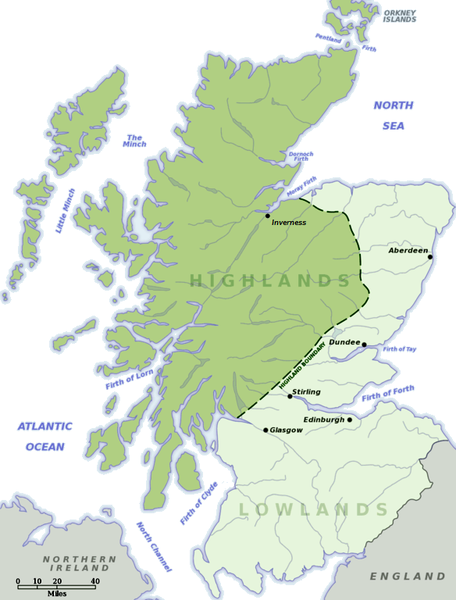| This Week’s Topic… | |||

Best viewed in
|
Scottish Highlands and
Lowlands
There was soon a process of the rehabilitation of highland culture. Tartan was adopted for highland regiments in the British army, which poor highlanders joined in large numbers in era of the Revolutionary and Napoleonic wars (1790–1815). Tartan had largely been abandoned by the ordinary people of the region, but in the 1820s, tartan and the kilt were adopted by members of the social elite, not just in Scotland, but across Europe. The international craze for tartan, and for idealizing a romanticized Highlands, was set off by the Ossian cycle, and further popularized by the works of Scott. His "staging" of the royal Visit of King George IV to Scotland in 1822 and the king's wearing of tartan resulted in a massive upsurge in demand for kilts and tartans that could not be met by the Scottish linen industry. The designation of individual clan tartans was largely defined in this period and they became a major symbol of Scottish identity. This "Highlandism", by which all of Scotland was identified with the culture of the Highlands was cemented by Queen Victoria's interest in the country, her adoption of Balmoral as a major royal retreat from and her interest in "tartenry". The Lowlands (Lallans or the Lawlands; Scottish Gaelic: a' Ghalldachd, "the place of the foreigner") is not an official geographical or administrative area of the country. However, in normal usage it refers to those parts of Scotland not in the Highlands. A much wider definition of the Highlands is that used by the Scotch Whisky industry. Highland Single Malts are produced at distilleries north of an imaginary line between Dundee and Greenock. This categorization includes the whiskies produced on the islands around the perimeter of Scotland (the Island Single Malts), except for Islay (see Islay whisky). Incongruously, the area also includes certain lowland areas in the North-East of the country such as Banffshire and Aberdeenshire.
|
||
